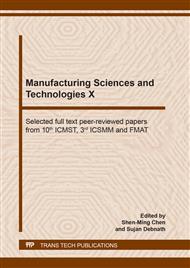p.3
p.8
p.18
p.23
p.28
p.36
p.43
p.49
Improvement of Binderless Banana Pseudo-Stem Particleboard Properties via Natural Laminating Materials
Abstract:
In this study, the first objective was to investigate the basic mechanical and physical properties of the binderless banana pseudo-stem particleboard (BBP) at a targeted density of 650 kg/m3. The second objective was to examine the effect of laminates on the properties of BBP. Three types of BBP were produced, that were oil palm veneer laminated BBP, layered banana leaf laminated BBP, and BBP without lamination. No adhesive was used in the production of the BBP, but for lamination process, cold setting polyvinyl acetate (PVAc) was used. Three tests were conducted which were internal bonding (IB), static bending, and water absorption resistance tests. According to the results, BBP without lamination had the lowest IB. The lowest modulus of rupture (MOR) and lowest modulus of elasticity (MOE) in static bending was also recorded by BBP without lamination. The highest IB, MOR and MOE, were of BBP laminated with oil palm veneer. These values were followed by IB, MOR and MOE of BBP with banana leaf lamination. Highest percentage water absorption (WA) was exhibited by BBP without lamination, followed by BBP laminated with oil palm veneer, and then by BBP laminated with layered banana leaves. The types of BBP significantly influence the MOR and MOE, but did not significantly affect the IB and WA. In general, laminating the BBP using natural layered materials has significantly improved the MOR and MOE.
Info:
Periodical:
Pages:
23-27
Citation:
Online since:
June 2020
Price:
Сopyright:
© 2020 Trans Tech Publications Ltd. All Rights Reserved
Share:
Citation:


